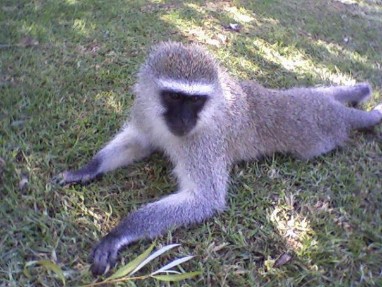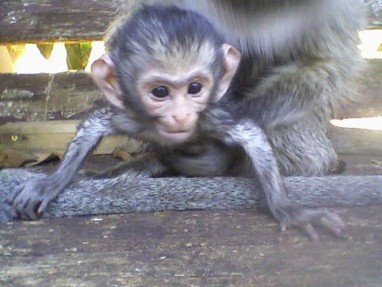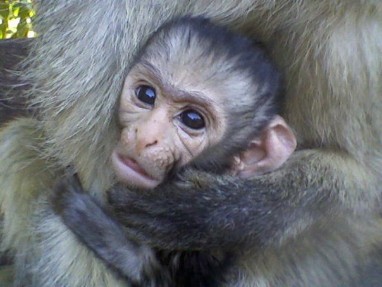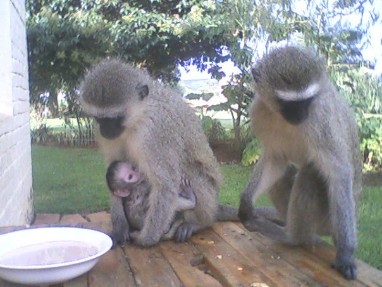It commonly lives in groups or "troops" of 20 or more, however the size of the group can be smaller than 20.
Its gestation period is 7 months with a single offspring produced.
The Vervet Monkey is known to have a life span of up to 20 years.
The Vervet Monkey has three alarm calls, depending on the different types of threats to the community. There are distinct calls to warn of invading leopards, snakes, and eagles. In making an alarm call, a monkey attracts attention to themselves, increasing their personal chance of being attacked, an example of altruistic behaviour.
In dominance displays vervet monkeys run the gamut from shaking branches and jumping around to making a hard 'kek-kek-kek' sound to mark their territories.
The pigmentation of the male Vervet Monkey's scrotum is a vivid blue that pales when the animal falls in social rank. The hydration of the scrotal skin controls its color.
Male Vervet monkeys vary in size from 45 to 85 cm (18-34 in.), and weigh between 3.5 to 7.5 kg (7.5-16.5 lbs).
Vervet monkeys living near areas inhabited by people can become pests, stealing food and other items and raiding crops.
Females vary in size from 40 to 60 cm (16-24 in.), and weigh between 2.5 to 5.5 kg (7.5-16.5 lbs).
Both males and females have tail lengths that can vary from 50 to 115 cm.
They have a gestation period of five and a half months.
The Vervet Monkey ranges throughout much of Southern and East Africa, being found from Ethiopia, Somalia, Sudan and south to South Africa.
They have a number of predators including leopards, servals, baboons, caracals, crocodiles, pythons and large eagles.
The Vervet Monkey inhabits savanna lands and mountains up to 4000 m (13,100 ft.).
The Vervet Monkey is definitely frugivorous, but it also supplements its diet with a variety of other foods, including leaves, seeds, insects and small rodents.




